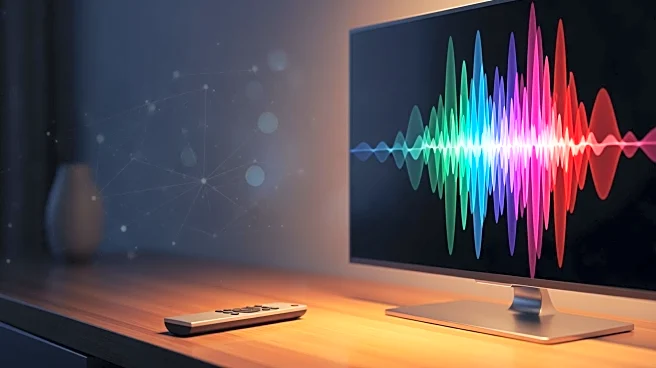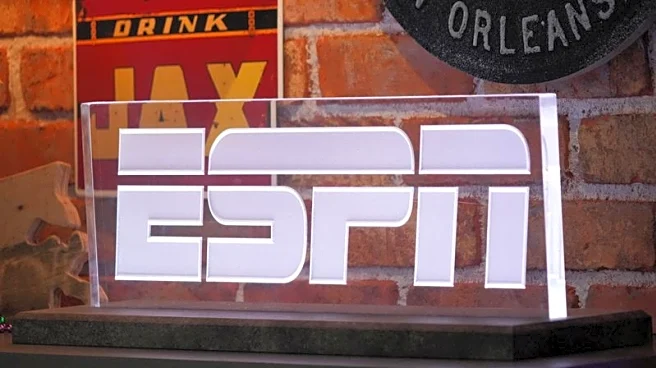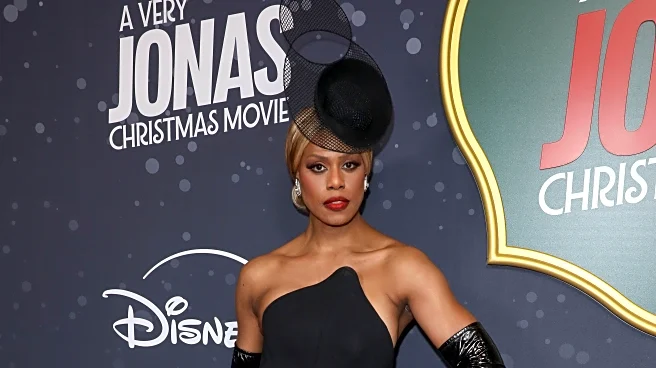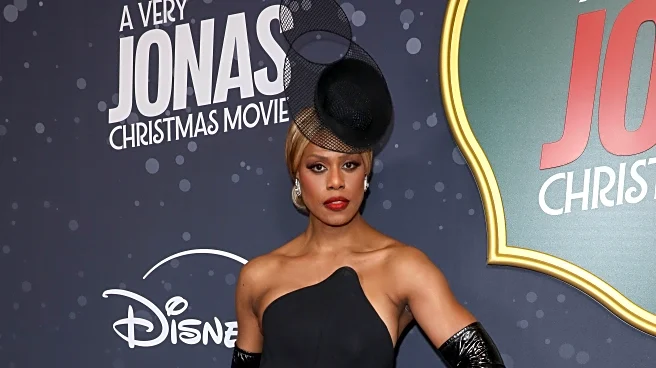What's Happening?
Disney and YouTube have reached a multi-year distribution agreement to restore ABC, ESPN, and other channels to the YouTube TV streaming platform. This deal ends a blackout that began in late October when
Disney pulled its programming due to a standoff over fair rates. The agreement allows Disney+ and Hulu Bundle content to be shared on YouTube TV, providing subscribers with more flexibility and choice. The restoration of channels is expected to be immediate, allowing fans to enjoy programming options such as college football over the weekend.
Why It's Important?
The agreement between Disney and YouTube is significant for the streaming industry, as it resolves a dispute that could have led to increased subscription costs for consumers. YouTube TV, the largest internet TV provider in the U.S., with over 9 million subscribers, faced potential subscriber loss due to the blackout. The deal ensures that subscribers retain access to popular channels without facing higher prices, maintaining competitive pressure on other streaming services like Hulu + Live TV and Fubo. This resolution highlights the importance of negotiations in the streaming market, where content availability can significantly impact consumer choices.
What's Next?
Subscribers can expect the channels to return and recordings in their library to be restored within 24 hours. YouTube had previously offered a $20 credit to subscribers if Disney content was unavailable for an extended period, indicating a commitment to customer satisfaction. The resolution of this dispute may lead to further negotiations between streaming platforms and content providers to ensure fair pricing and content availability. As streaming services continue to evolve, similar agreements may become more common to prevent disruptions in service.
Beyond the Headlines
The deal between Disney and YouTube underscores the growing influence of streaming platforms in the media landscape. As traditional cable subscriptions decline, streaming services are becoming the primary mode of content consumption, necessitating strategic partnerships and negotiations. This development may prompt other media companies to reassess their distribution strategies, potentially leading to more collaborative efforts to enhance viewer experience and expand market reach.













